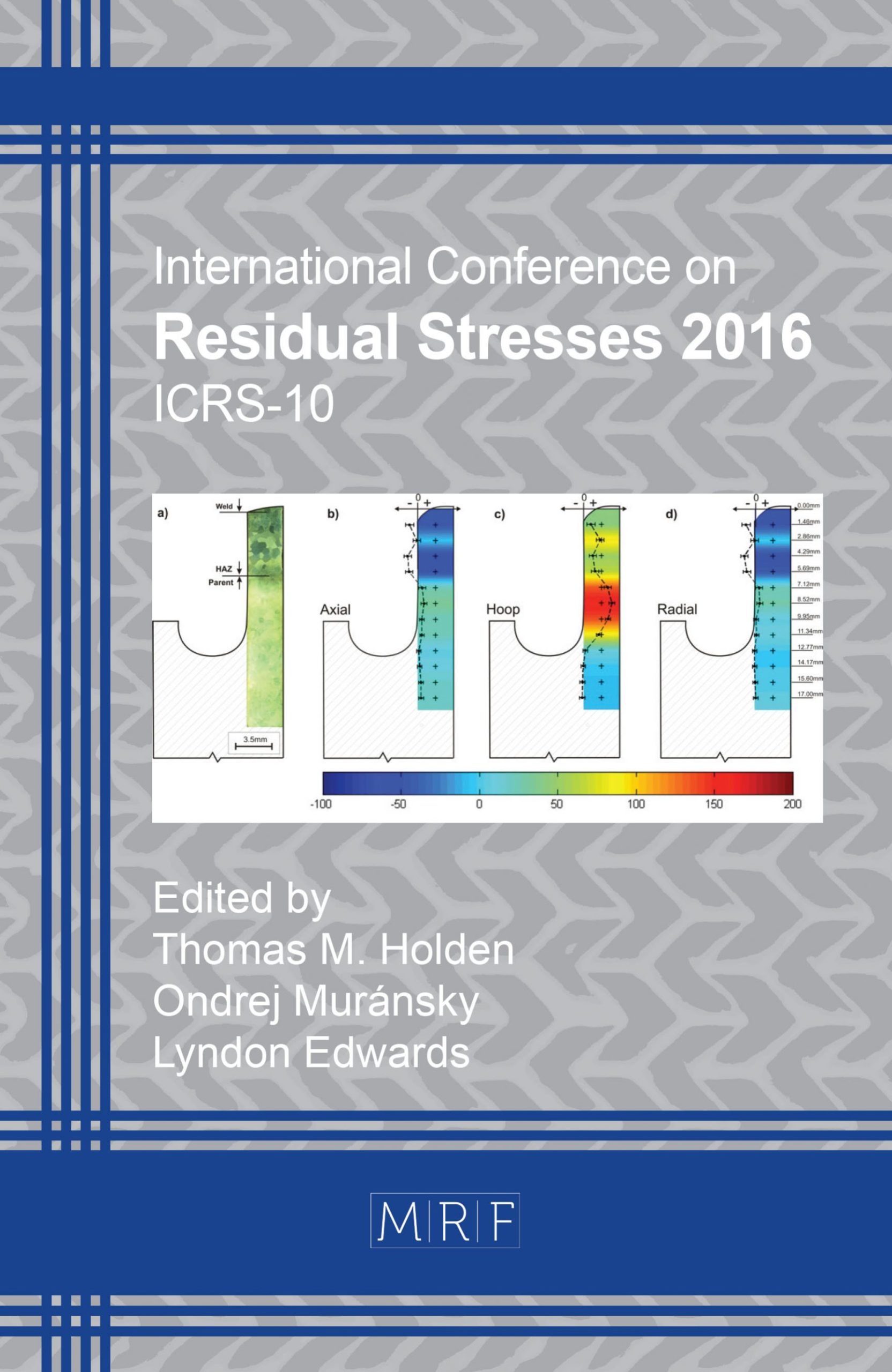Neutron Diffraction Measurements of Residual Stress and Mechanical Testing of Pressure Sintered Metal-Ceramic Composite Systems
K. Toppler, V. Luzin, M. Saleh, A. Ruys, K. Kabir, D. Chavara
download PDFAbstract. Functionally graded materials (FGMs) are composite materials which vary in phase composition, microstructure and properties over one or more dimensions. They are a good potential choice for nuclear reactor components as they can be engineered to effectively resist corrosion and radiation damage. In the case of a metal-ceramic FGM, they can mate the strength and ductility of a metal with the hardness and toughness of a ceramic. A series of composite samples of variable metal-ceramic ratios was manufactured by hot uniaxial pressing in cylinders. Bulk uniform samples of a certain composition were manufactured as a more efficient way of studying FGMs without the extreme gradient required in practical applications. Thermally and mechanically generated stresses, inherent in composites, frequently create conditions for micro-cracking development, depending on the material’s micro-structural characteristics and the thermo-mechanical processing route. Bulk stress measurements in the prepared samples were carried out on the Kowari diffractometer on the OPAL reactor at ANSTO. Both phases – metal matrix and ceramic inclusions – were measured in both axial and lateral directions for full characterisation of the composite stress state. When compared against analytical evaluation, experimental results, for some samples, demonstrated significant stress relaxation with micro-cracking being the main suspect.
Keywords
Functionally Graded Materials, FGM, Residual Stress, Metal-Ceramic Composite
Published online 12/22/2016, 6 pages
Copyright © 2016 by the author(s)
Published under license by Materials Research Forum LLC., Millersville PA, USA
Citation: K. Toppler, V. Luzin, M. Saleh, A. Ruys, K. Kabir, D. Chavara, ‘Neutron Diffraction Measurements of Residual Stress and Mechanical Testing of Pressure Sintered Metal-Ceramic Composite Systems’, Materials Research Proceedings, Vol. 2, pp 545-550, 2017
DOI: http://dx.doi.org/10.21741/9781945291173-92
The article was published as article 92 of the book Residual Stresses 2016
![]() Content from this work may be used under the terms of the Creative Commons Attribution 3.0 licence. Any further distribution of this work must maintain attribution to the author(s) and the title of the work, journal citation and DOI.
Content from this work may be used under the terms of the Creative Commons Attribution 3.0 licence. Any further distribution of this work must maintain attribution to the author(s) and the title of the work, journal citation and DOI.
References
1. Kieback, B., A. Neubrand, and H. Riedel, Processing techniques for functionally graded materials. Materials Science and Engineering: A, 2003. 362(1–2): p. 81-106. http://dx.doi.org/10.1016/S0921-5093(03)00578-1
2. Miyamoto, Y., Functionally Graded Materials: Design, Processing and Applications. 1999: Springer US. http://dx.doi.org/10.1007/978-1-4615-5301-4
3. Chavara, D.T., M. University of Sydney. School of Aerospace, and M. Engineering, Synthesis and Testing of Metal-ceramic Functionally Graded Materials. 2009: University of Sydney.
4. Ling, Y.-H., et al., Fabrication and evaluation of SiC/Cu functionally graded material used for plasma facing components in a fusion reactor. Journal of Nuclear Materials, 2002. 303(2–3): p. 188-195. http://dx.doi.org/10.1016/S0022-3115(02)00801-2
5. Nawkaa, S., et al., Synthesis, Characterization and FEM-simulation of W/CuCrZr-Composites for Extreme Thermal Applications.
6. Australian-Standard, AS 1774.5:2014 Refractories and refractory materials-physical test methods. Method 5: determination of bulk density, apparent porosity and true porosity (ISO 5017:2013, MOD), 2014, Australian Standard.
7. Latella, B.A. and T. Liu, High-Temperature Young’s Modulus of Alumina During Sintering. Journal of the American Ceramic Society, 2005. 88(3): p. 773-776. http://dx.doi.org/10.1111/j.1551-2916.2005.00082.x
8. ASTM-International, ASTM E1875-13 Standard test method for dynamic young’s modulus, and poisson’s ration by sonic resonance, 2013, ASTM International.
9. ASTM-International, ASTM C1259-15 Standard test method for dynamic young’s modulus, shear modulus, and poisson’s ratio for advanced ceramics by impulse excitation of vibration, 2015, ASTM International.
10. www.matweb.com. [cited 2016].
11. Hashin, Z., The Elastic Moduli of Heterogeneous Materials. ournal of Applied Mechanics, 1962. 29(1): p. 143-150. http://dx.doi.org/10.1115/1.3636446
12. Clyne, T.W. and P.J. Withers, An Introduction to Metal Matrix Composites. 1993: Cambridge University Press. http://dx.doi.org/10.1017/CBO9780511623080































